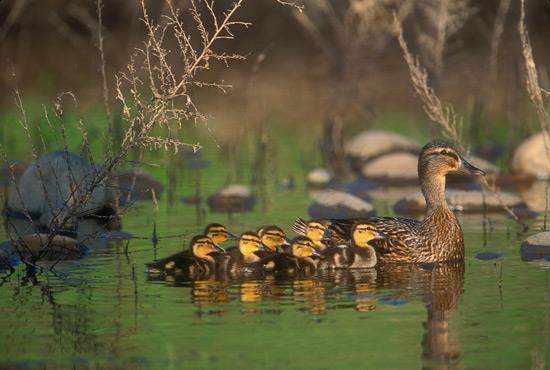Did I really say for a moment we were winning? Silly, silly, me.
KPLC 7 News, Lake Charles, Louisiana
USDA exploding beaver dams to benefit trout
VILAS County – WI
Wildlife Services Project Leader Kelly Thiel directed the removal of the dam by blowing it up with explosives.
“The purpose of our work is to create a free-flowing stream for the benefit of the trout to be able to migrate up and down,” Thiel says. “If you have beaver dams in there, they can’t migrate, they’re locked in. To have a self-sustaining stream, it needs to be free-flowing.”
Trout struggle to travel, spawn, and live without those cold, free-flowing streams.
The U.S. Forest Service and Wisconsin DNR decide which streams Wildlife Services will clear. Of the approximately 1,500 miles of streams that Wildlife Services clears in northern Wisconsin, most of them are high-quality trout streams.
The work leading up to a particular blast can take months or years. Wildlife Services surveys beaver populations on streams. Then, once it selects a stream for clearing, workers trap all the beavers near the dams in the spring or early summer. It blasts about 150 dams each year.
“This stuff detonates at 23,000 feet per second,” Thiel says, stringing a cord between containers of explosives.
It took about three pounds of explosives to blow up this dam on the Little Deerskin River. Workers placed them strategically and double-checked all the equipment before clearing other people from the area and taking cover with a remote trigger.
The explosion sent tree limbs, water, and other debris dozens of feet in the air.
Those lucky trout! Gosh, I bet that water is so crystal clear afterwords when all that debris falls back into the stream. The fish must LOVE it, I mean not the baby fish that were hiding in the side sticks of the dam obviously because they were blown up, but the other fish that survive the falling limbs and rocks, they must love their new gritty home. And the predators must love it too because even after fish stop falling from the sky, there’s no cover left for the survivors. Easy pickin’s.
Ironically yesterday was the LAST day for Wisconsin to receive public comment on their truly  misinformed beaver management plan. You remember, the one where they think even though research says beavers help trout in the wacky west, Wisconsin fish are weaker and their conditions are harder, and so they must be saved by painstakingly killing beavers and blowing up dams. I and others dutifully sent them comments containing actual science, but they will obviously ward it of with their powerful information-resistant shields and continue doing what they do.
misinformed beaver management plan. You remember, the one where they think even though research says beavers help trout in the wacky west, Wisconsin fish are weaker and their conditions are harder, and so they must be saved by painstakingly killing beavers and blowing up dams. I and others dutifully sent them comments containing actual science, but they will obviously ward it of with their powerful information-resistant shields and continue doing what they do.
At least USDA will get to keep having fun. For them buisiness is booming. BOOM BOOM BOOM!
Here are my submitted comments in case anyone’s interested. I was trying HARD not to be too sarcastic, but the last paragraph is my favorite.
Beaver Management Plan
I’m interested in the research that has lead you to believe trout in Wisconsin function differently than trout in Utah, Colorado or Oregon. I’m surprised that no one in the audience of your webinar asked about this, or wanted to understand why you think the principles of hyporheic exchange operate differently in the badger state then in the west. Current research emphasizes the hydraulic pressure of water behind beaver dams push that water downward and promote exchange of groundwater into beaver streams, making them cooler.
It surprises me that there is so much faith in the Avery study noting the co-occurrence of dam removal with trout population improvement. Obviously correlation doesn’t mean causation. A cursory review of the literature and periodicals of the time confirm that there were significant other changes to the watershed during that period, that could easily have affected fish health. To assume that this is reliably due to the reduction in beaver seems naïve and ahistorical.
I was confused to hear that Wisconsin believes the population of beaver went up historically before this program was implemented, until I realized you were referring only to the baseline of the 1900’s – then it made sense. I’m not sure why you ignored the significant beaver population that existed before then. The fur trade brought the French to your state as early as the 1600’s I think, and obviously natives lived with beaver abundance long before that. In 1621 Samuel de Champlain described America’s pristine landscape and exclaimed that beaver occupied “every river, brook and rill.” Surely given the waterways of Wisconsin your landscape was no different. Your beaver population must have been prodigious, much, much higher than it was even before you instated the beaver management plan. If beaver really couldn’t co-exist with trout why didn’t the Dakota Sioux or Ojibwe complain about the abysmal fishing conditions?
The attached study completed recently looked specifically at the issue of trout passage of beaver dams, and found that natives like brook and cutthroat passed easily in both directions, while nonnatives had more trouble. Are you suggesting that Wisconsin has fewer native trout? Or that the trout it has are disabled in some way?
It is regretful that when the issue of ‘protecting resources” was discussed in your presentation, you seemed fairly disinterested in the most impactful one you take for granted; the one that creates habitat, increases invertebrates, sequesters carbon, and stores water. As I just returned from presenting at the chapter presidents meeting at TU specifically on beaver and trout. I want to suggest that you select just one stream as a control to study what happens to fish population if you stop trapping beaver.
I think the results would surprise you.
Let’s cleanse the pallate with two lovely photos from Robin in Napa showing the barren ruined habitat that beavers leave in their destructive fish killing wake.




 Understanding Waterfowl: Beaver Ponds and Breeding Ducks – Growing beaver populations have created an abundance of high-quality habitat for waterfowl
Understanding Waterfowl: Beaver Ponds and Breeding Ducks – Growing beaver populations have created an abundance of high-quality habitat for waterfowl








































